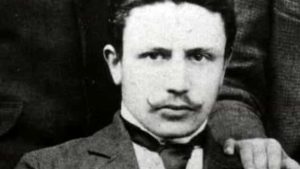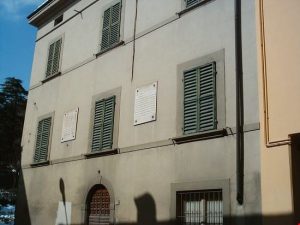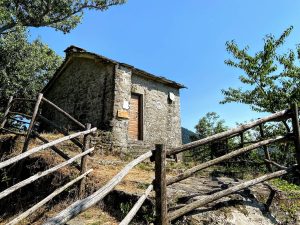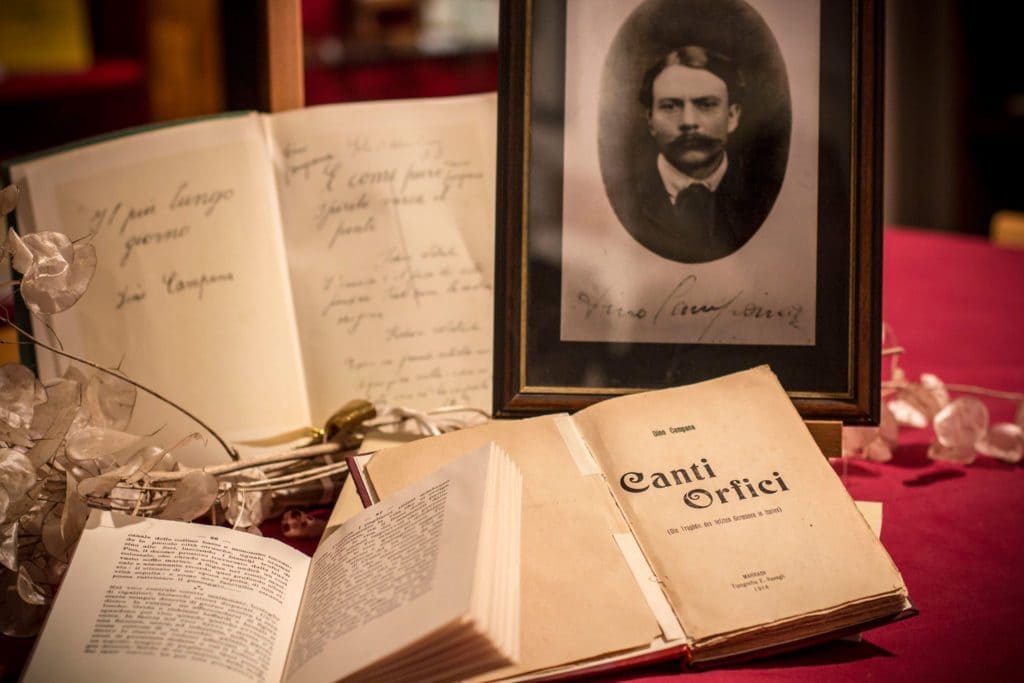By Alessia Benelli
Dino Campana is considered one of the most important Italian poets of the early twentieth century. Born in 1885 in Marradi, he was the son of Giovanni Campana, an elementary school teacher, and Francesca Luti, known as Fanny, a severe and very religious woman, morbidly attached to her son Manlio, Dino’s younger brother.

After finishing high school at the Salesians and high school in Faenza, he studied chemistry in Bologna and Florence, showing an inability to adapt to normality, preferring to travel first in Italy and then abroad, cultivating his literary passion.
At the age of twenty-one, in September 1906, he was admitted to the Imola mental hospital for the first time and was diagnosed with early dementia. Between 1916 and 1917 he had a tormented and intense love affair with the writer Sibilla Aleramo, which ended following the poet’s increasingly inconsistent and violent temperament. In 1917 he was arrested in Novara for vagrancy, and on 28 January he was interned at the “Castel Pulci” psychiatric hospital where he remained until his death in 1932.
During his stay in the mental hospital, Campana often had flashes of lucidity: he wanted to leave that place, but not to resume literature, which had now been abandoned (he had not written for some time) but to be able to work and earn money. At the end of February 1932 he injured himself, probably trying to climb over the hospital fence: a few days later he died of septicemia.
 Dino Campana is considered by many to be the Italian “visionary poet” par excellence. For him poetry is a means of being able to assert one’s freedom.
Dino Campana is considered by many to be the Italian “visionary poet” par excellence. For him poetry is a means of being able to assert one’s freedom.
In 1913 he entrusted the manuscript of the Canti Orfici, his greatest work, to Soffici and Papini who however lost it. Campana will rewrite it, reconstructing it from memory and publish it the following year. The work will be favorably received by critics.
As with his life, a wanderer and anarchist, characterized by the unstoppable desire for travel, Campana’s poetics also have travel, dreamlike or real, as its central theme. It was first in Mugello that he made his journeys on foot or with makeshift vehicles in search of ‘his truth’. On the Tuscan-Romagna Apennines there are marked routes that retrace the paths that the poet took. These are the ‘Journey of Love’ and the ‘Pilgrimage to La Verna’.
THE JOURNEY OF LOVE – Sibilla Aleramo wrote to Dino Campana on 10 June 1916 after reading the ‘Orphic Songs’. The poetess was then in the “Villa La Topaia” in Borgo San Lorenzo on holiday, while Campana was staying at the Barco – Rifredo (Firenzuola) health resort to get back to health.
After the exchange of letters, the two met at the Barco on the morning of 3 August 1916. Here love and passion flared up between the two: a magnificent and desperate love story born in the solitude of the Mugello woods.
The two lovers met again between August and September for over 20 days in Casetta di Tiara (Palazzuolo sul Senio). The two arrived at Casetta di Tiara certainly crossing the splendid Valle d’Inferno and it is equally probable that Campana returned to Marradi passing through Palazzuolo sul Senio. The route proposed to walkers (which goes from Barco to Palazzuolo sul Senio) requires approximately 11 hours of walking.
 THE PILGRIMAGE TO LA VERNA – Towards the middle of 1910 Campana, after years of wandering between Bologna, Florence, Paris and Argentina, returned to Marradi. The “pilgrimage” on foot from Marradi to Verna took place in September – October of that year: it was on that occasion that he wrote the “travel diary”.
THE PILGRIMAGE TO LA VERNA – Towards the middle of 1910 Campana, after years of wandering between Bologna, Florence, Paris and Argentina, returned to Marradi. The “pilgrimage” on foot from Marradi to Verna took place in September – October of that year: it was on that occasion that he wrote the “travel diary”.
The stages of the journey, described with poetic prose in the Canti Orfici are the following: Marradi – le Scalelle – Campigno – Castagno d’Andrea – Falterona – Campigna – Stia – La Verna and return.
The route proposed today goes from Marradi to Stia following the stages of the Canti Orfici song “La Verna”. From Marradi it is possible to reach Stia with an extraordinary mountain itinerary that passes through the valleys and ridges of the Mugello, then entering the heart of the Casentino Forest National Park, Monte Falterona and Campigna.
From Stia Campana he headed towards Verna, probably following the Casentino valley floor, currently not very rewarding from a hiking point of view. For this reason it was decided to interrupt the pilgrimage trek to Stia.
The entire route can be divided into four stages as it is possible to stay overnight in San Godenzo, near the Muraglione Pass, in Castagno d’Andrea, in Campigna and in Stia.
